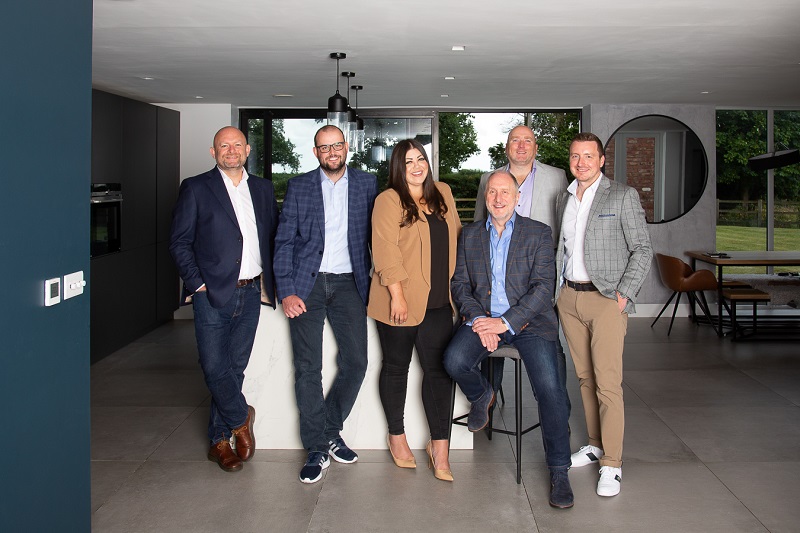Riya Shanmugam got where she is today as GVP of Global Alliances and Channels at the all-in-one observability platform, New Relic because her parents encouraged her from a young age to believe that she could aim high.
“The formative years are really important because what was ingrained in my head when I was four or five is what’s shaped me,” she says. “There was always someone pushing me and making me believe that I could be more than who I was.
“And we have to start with that for our kids. We talk about girls going into STEM careers, but that happens much later, when they’re 16 or 18, and that’s already too late. That’s why the beginnings are so important.”
The beginnings for Shanmugam were “a very conservative South Indian town,” meaning she was expected to choose a career in one of the three prestigious professions of medicine, engineering, or law rather than her original choice of fashion design. “That’s more for a societal reason, not because I couldn’t be that; it was about what society would or wouldn’t accept,” she explains.
Inspired by her computer science teacher, who happened to be a woman, and her aptitude for maths, she decided to follow a tech engineering path. Shanmugam firmly believes that having female role models, like her teacher, was invaluable in supporting women taking up STEM careers.
“You have to see what you want to be and yourself in that person,” she argues. “I continue to have very few of ‘me’ in whom I see or aspire to be. When I think about the times I said, ‘I want to be like her’, then explored more about that individual and found out that they grew up in a similar environment or had similar exposure to what I had, I knew that someone had paved the way for me. So, I think that representation is incredibly important.”
Limitations and biases
Interestingly, Shanmugam reveals that she only became fully aware of the limitations and biases faced by women when she moved to the US. She points out that while the appointment of Kamala Harris as the first woman vice president was significant, India had had female incumbents in high office much earlier.
“Nothing was off the table for women where I grew up in India,” she says proudly. “Although my mum didn’t have a career, she ran the show – we had a lot of businesses and employees that worked for us. It was not novel for women to lead. I’m not saying that bias didn’t exist, it did, but I had the good fortune of not facing a whole lot of biases as I grew up.”
She argues that the limitations women face are intrinsically built into the system of Western countries, so much so that their existence is only sometimes recognised. This meant that women were denied career opportunities due to life events, such as getting married, having children or having to take care of elderly parents. Becoming a mother puts a woman at a crossroads where she has to choose between staying at home or returning to work.
“Childcare in most countries is challenging and expensive,” says Shanmugam. “When you have a child, you’re thinking about do I just write my entire paycheque so that I can leave my child for eight hours in daycare or should I be with my child looking after them. But, if you take a break from your career, you’ve lost the experience you could have gained. We have to make childcare more affordable and support women better at that stage of life.
“The same is true as they continue to evolve in their careers and their parents are ageing. Elderly care is extremely expensive, and the support from the Government or in many countries is not enough to continue to keep women in the workplace.”
In other words, it wasn’t just organisations needing to do more to attract female talent; governments had a role to play in achieving a paradigm shift to enable women to fulfil their career ambitions.
Conforming to expectations
Like many women entering the tech industry, Shanmugam went through a period of having to present herself in a way that was acceptable in a male-dominated sector. She explains: “I’m an engineer by trade, but I’m an extrovert; I draw energy from people and interactions. So, when I got my MBA and moved into roles that kept me in tech and customer-facing, no one would believe I was a techie and a nerd by choice.
“I didn’t look like one because I wore long hair and dresses. I tried all sorts of things to fit in with what a tech professional should look like – I’d put my hair up, wear glasses, put on pantsuits and wear these bulk block heels instead of stilettos. It was exhausting and time-consuming.”
During a spell at Google, she experienced impostor syndrome until she discovered that many of her colleagues had insecurities too about areas they didn’t think they were good at. It made her realise that people were there because of their expertise, enabling team members to complement each other.
“Having gone through those experiences, I can be whomever I want to be,” she says. “I know I earned that place, and it’s OK to be how I want to look.”
Shanmugam believes that female leadership traits are becoming more important in the modern workplace. In the past, men were seen as natural leaders, mainly due to physical endurance and capacity to lead. Today, the emphasis was on leading with the heart, with empathy.
“At any given time, you’re working with individuals across the globe, from all walks of life and all situations, so it’s important to know how the other person would feel,” she argues.
“A lot of the women that I know – I’m not saying this is man versus woman – have a high EQ in a situation beyond just looking at data. It works massively in our favour to be leaders because, intellectually, we not only understand the context of the data and the situation behind it but understand that the person on the other side of the table is a human first before they are a customer or employee.
“I believe in bringing my whole self to work and creating a space where my teams can do the same. That means creating a high sense of psychological safety where individuals feel comfortable sharing what they think, knowing that there will be no repercussions and no change in the perception of them from other individuals.
“The pandemic has accelerated some of that, ‘bring more of ourselves to work’. I think women can play a role in creating a safer and more equitable workplace through our ability to groom and develop the next set of leaders comfortable with who they are.”
New Relic and DE&I
At New Relic – a company that empowers engineers with a data-driven approach to planning, building, deploying and running great software – DE&I starts with the hiring process. It is set up to attract a diverse talent pool by ensuring an unbiased interview environment, and there are tools to ensure equality of opportunity across the board.
The company also has active ERGs for women and people of colour, and there’s a sponsorship programme that enables women to gain insight into the life of an executive.
Shanmugam agrees that the current economic situation has meant companies putting DE&I initiatives on the back burner and focusing mainly on productivity and cost savings. While she is not a fan of having quotas and targets for DE&I, they were important for holding organisations accountable.
She says: “It’s like me announcing to the world that I’m going to lose 15 pounds in the next six months, then the world will hold me accountable. External accountability definitely helps organisations to prioritise and make progress on DE&I initiatives. But if I set a target for myself, it’s loosely defined.
Join DiversityQ at our Women in IT Summit UK 2023 on 18th May to learn more about how we champion and support women working in technology. Secure your place here.









